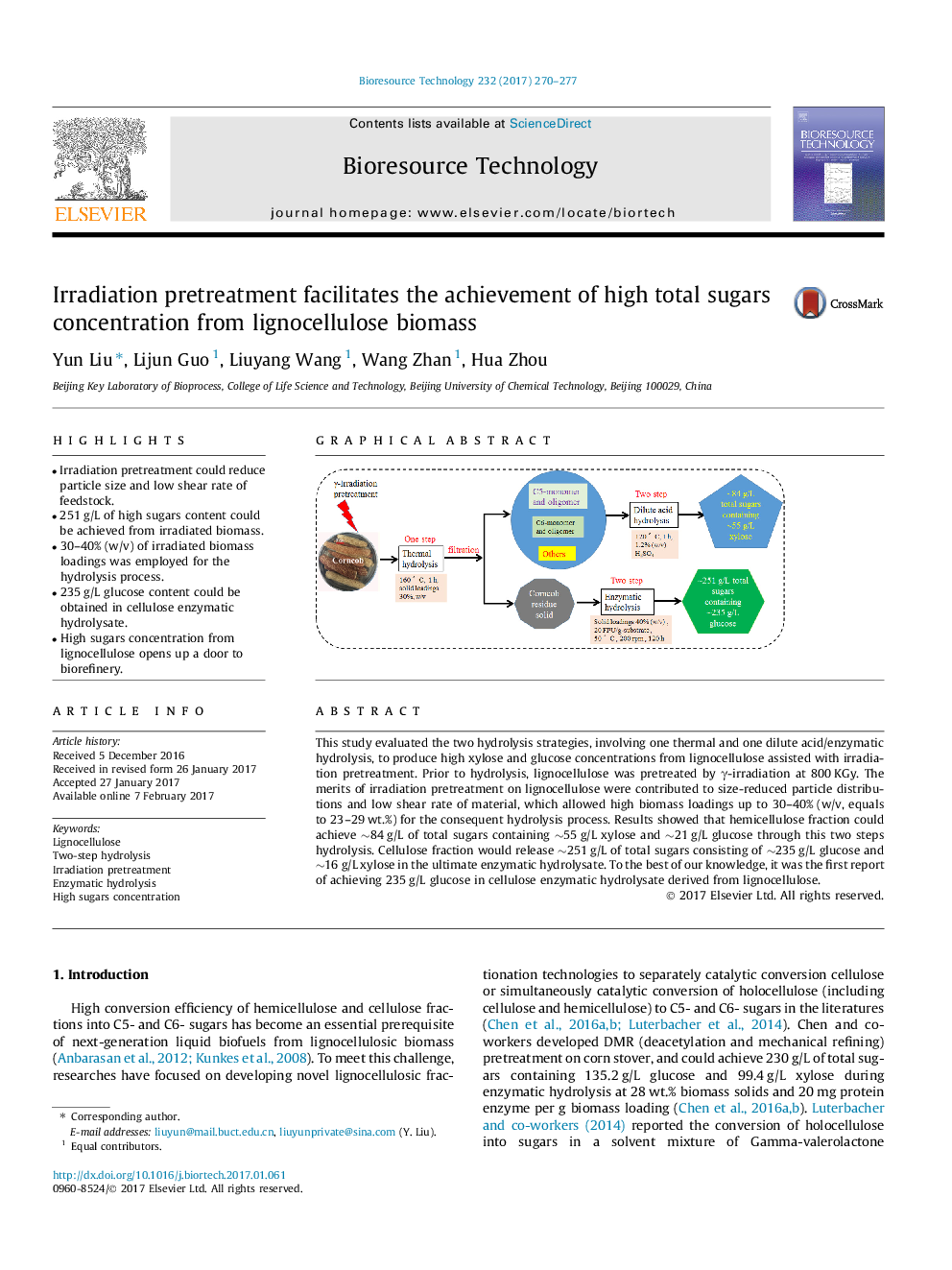| Article ID | Journal | Published Year | Pages | File Type |
|---|---|---|---|---|
| 4997586 | Bioresource Technology | 2017 | 8 Pages |
â¢Irradiation pretreatment could reduce particle size and low shear rate of feedstock.â¢251 g/L of high sugars content could be achieved from irradiated biomass.â¢30-40% (w/v) of irradiated biomass loadings was employed for the hydrolysis process.â¢235 g/L glucose content could be obtained in cellulose enzymatic hydrolysate.â¢High sugars concentration from lignocellulose opens up a door to biorefinery.
This study evaluated the two hydrolysis strategies, involving one thermal and one dilute acid/enzymatic hydrolysis, to produce high xylose and glucose concentrations from lignocellulose assisted with irradiation pretreatment. Prior to hydrolysis, lignocellulose was pretreated by γ-irradiation at 800 KGy. The merits of irradiation pretreatment on lignocellulose were contributed to size-reduced particle distributions and low shear rate of material, which allowed high biomass loadings up to 30-40% (w/v, equals to 23-29 wt.%) for the consequent hydrolysis process. Results showed that hemicellulose fraction could achieve â¼84 g/L of total sugars containing â¼55 g/L xylose and â¼21 g/L glucose through this two steps hydrolysis. Cellulose fraction would release â¼251 g/L of total sugars consisting of â¼235 g/L glucose and â¼16 g/L xylose in the ultimate enzymatic hydrolysate. To the best of our knowledge, it was the first report of achieving 235 g/L glucose in cellulose enzymatic hydrolysate derived from lignocellulose.
Graphical abstractDownload high-res image (223KB)Download full-size image
